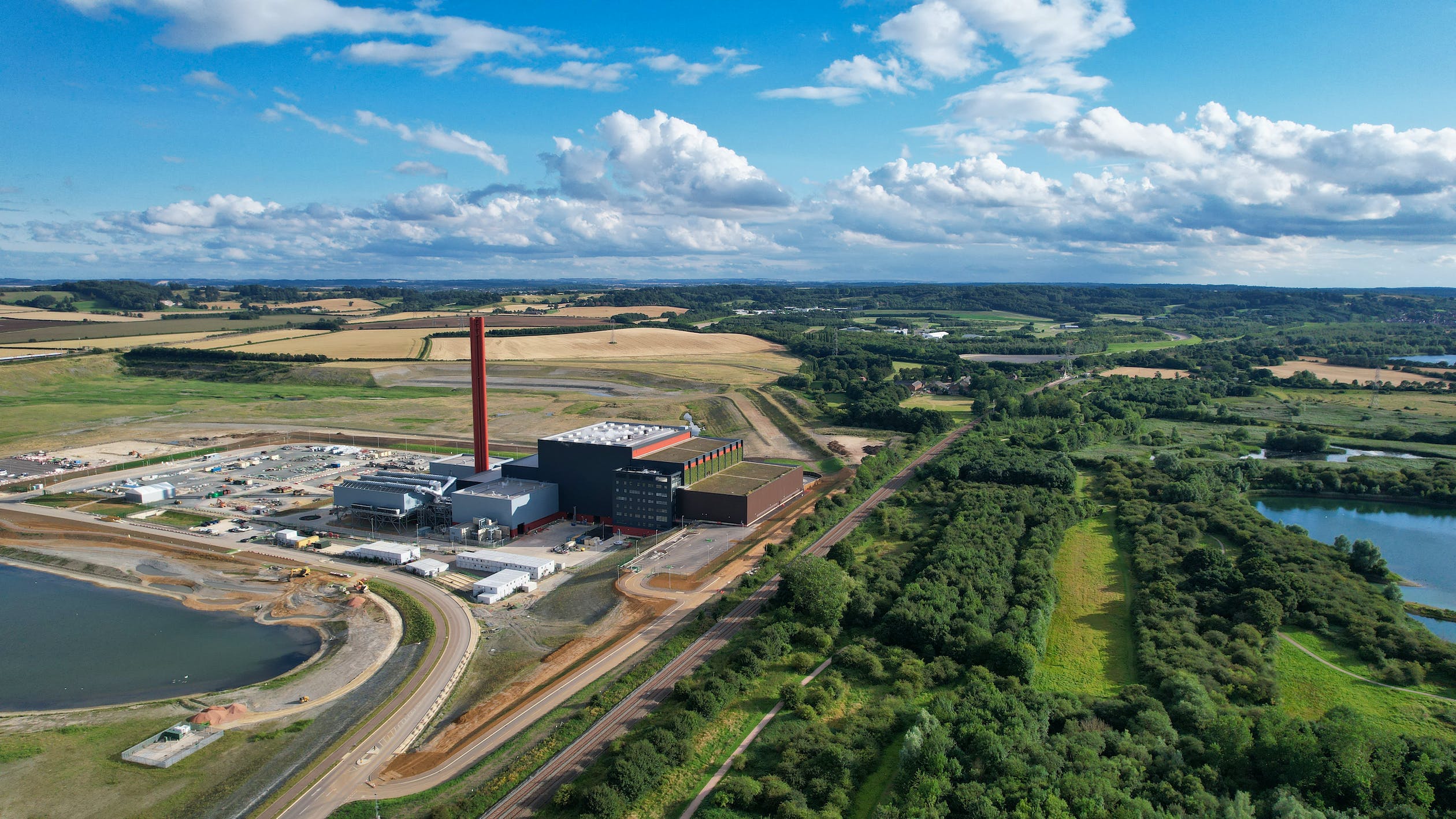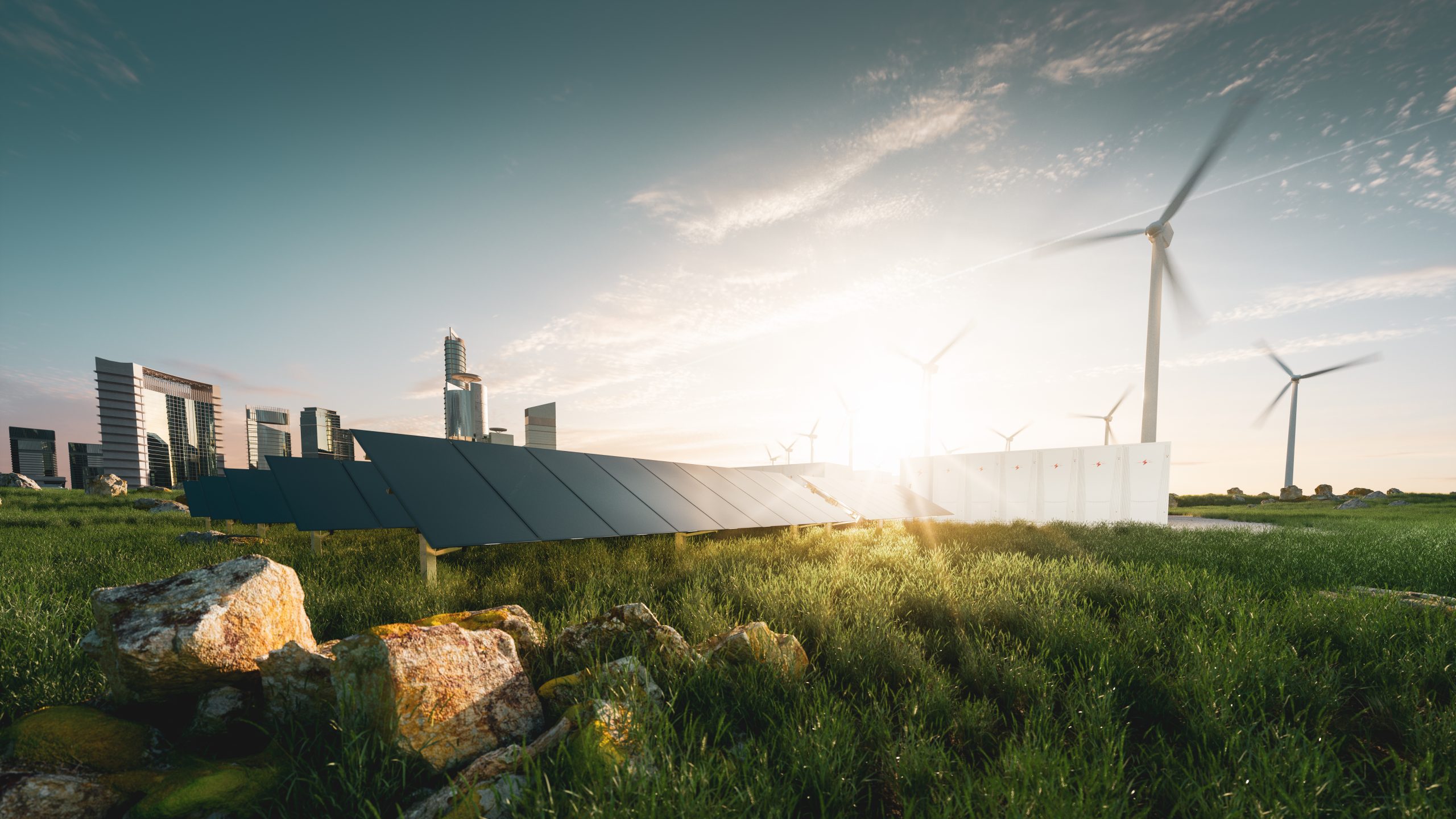Green warehousing: paving a sustainable future
Explore the power of green warehouse practices, where businesses align efficiency with sustainability, committing to a more responsible tomorrow. Join us as we navigate the revolution of warehousing.

Henry Kivimaa

In the dynamic world of logistics, sustainability has become the latest trend, and green has become more than a color — it’s a commitment. From environmental technologies to eco-friendly strategies, businesses are redefining warehousing by adding a touch of green to their operations.
Challenge the stereotypes as this article reveals the true colors of green warehousing, proving that environmental consciousness extends far beyond clichés like craft beer and recycled paper. Keep reading to find out how to manage logistics in a sustainable way and learn to build a warehouse Greta Thunberg can be proud of.
What is a green warehouse?

Green warehouses are facilities that prioritize environmentally sustainable and eco-friendly practices in their design, construction, and operations within logistics and supply chain management. These warehouses aim to minimize their ecological footprint by implementing strategies that reduce energy consumption, decrease waste generation, and promote overall environmental responsibility.
Key features of a green warehouse may include:
- Energy-efficient lighting and heating systems
- Renewable energy sources like wind and solar power
- Sustainable construction materials
- Waste recycling programs
- Integrating technologies that enhance resource efficiency
The goal is to build a facility that not only meets the functional requirements of a warehouse but also aligns with the principles of environmental sustainability, contributing to a healthier planet and responsible business practices.
Green warehouses play an essential role in the broader movement toward sustainability and popularizing eco-friendliness in supply chain management.
It reflects various commitments, including:
- Reducing carbon emissions
- Conserving resources
- Following environmentally friendly principles in supply chain management
- Setting an example to other businesses
How to build a green warehouse?

Building a green warehouse means creating the structure of a logistics facility while following eco-friendly principles in each aspect of construction and management.
Before we get carried away by all the benefits of green warehousing, it’s crucial to learn about the foundations of sustainable logistics.
Sustainable site select
When selecting locations for green warehouses, it’s essential to prioritize areas that minimize their environmental impact and potentially give back to the planet, contributing to ecological well-being.
This means taking into consideration factors such as:
- Proximity to suppliers and customers
- Access to more sustainable transportation methods like railways or ports
- Availability of renewable energy sources
- Choosing locations without ecological significance
- Creating an overall sustainable infrastructure around your facility
Energy-efficient design
Focus on minimizing energy consumption and maximizing efficiency throughout the entire life cycle of the warehouse.
This means implementing strategies like:
- Optimizing insulation and reducing heat transfer using high-quality materials for the building’s envelope
- Making the most of natural lighting, incorporating skylights and translucent roof panels
- Using energy-efficient HVAC systems and technologies
Renewable energy sources
Incorporating green energy sources reduces dependence on traditional sources of energy and contributes to sustainability by harnessing renewable resources.
This involves solutions such as:
- Solar panels or wind turbines to harness power locally
- Hydroelectric dams and plants
- LED lights and automated sensors for long-lasting, energy-saving lighting
Sustainable construction materials
Choose eco-friendly and recycled materials for your construction to promote ecological balance and minimize environmental impact.
Here are some sustainable materials suitable for building a green warehouse:
- Natural materials such as bamboo, wood, cork, and rammed earth
- Recyclable materials like glass, steel, wood, and concrete
- Sustainably harvested timber
- Advanced building systems, including SIP and ICF
- Eco-friendly paints and finishes
Water conservation
Implementing water conservation techniques and strategies in green warehousing is crucial for contributing positively to the global effort to address the water crisis and prevent it from escalating further.
Water conservation practices include:
- Harvesting rainwater and using it in non-potable operations
- Water recycling by implementing systems to capture and clean wastewater
- Utilizing aerated faucets introduces air into the water stream, reducing actual water content and using less heat energy
Waste reduction and recycling
Waste reduction and recycling initiatives are integral to green warehousing, contributing to environmental sustainability and responsible resource management.
Here are key strategies for waste reduction and recycling in a green warehouse:
- Conducting waste audits to identify the types and amount of generated waste
- Implementing measures to reduce waste at the source
- Establishing recycling stations to simplify waste separation for employees
Pro tip: Beyond cost-cutting, waste reduction also provides a holistic view of your operational health. Ready to trade in your dumpster diving gear for a data diving suit? Learn how to turn trash into treasure with our article on lean warehousing.
Green certification
Green certification verifies a facility’s commitment to energy-efficient practices. While each certificate comes with different processes, criteria, and standards, they all demonstrate alignment with sustainable warehouse management, promoting efficiency and reducing environmental impact. As certificates require periodic renewal, they encourage a continuous commitment to sustainability.
Here are some of the most desired green certificates to pursue:
- LEED (Leadership in Energy and Environmental Design):
- BREEAM (Building Research Establishment Environmental Assessment Method)
- ISO 14001
Optimized transportation
Optimized transportation in green warehousing involves implementing strategies and practices toward a more sustainable and eco-friendly supply chain.
Here are some strategies how to optimize transportation:
- Route planning helps minimize distances and reduce fuel consumption, thereby also decreasing greenhouse gas emissions
- Bulk shipping and collaborating with suppliers to reduce the number of shipments
- Investing in fuel-efficient vehicles and low-emission transportation types
- Adopting alternative fuels such as CNG, LNG, or biodiesel reduces emissions from transportation
- Carbon offset programs allow businesses to compensate for their emissions, helping them work toward carbon neutrality
Technological integration
Adopting innovative solutions helps warehouses enhance operational efficiency, reduce environmental impact, and promote sustainability. Some aspects of technological integration in green warehousing include:
- Utilizing warehouse management systems (WMS) to optimize inventory management
- Automated systems like conveyor belts, robotic picking systems, and automated guided vehicles (AGV) to streamline processes
- Smart sensors and controls to track and optimize the energy usage within the facility
- Demand planning to help forecast inventory movements and shipping
- Cloud-based software to enhance scalability, accessibility, and collaboration while reducing the need for on-site hardware and equipment
- Machine learning and AI algorithms to adapt to ever-changing market trends and warehouse needs
Continuous monitoring and improvement
Regular environmental performance assessments ensure that your operations and warehouses evolve with the times instead of fighting them. Here are some ways to monitor and improve your sustainability efforts:
- Establish and review KPIs related to green practices to track your progress over time
- Perform regular audits of sustainability metrics and identify areas for improvement
- Routine equipment inspections help identify maintenance needs and potential inefficiencies
- Involve your employees and ask for their ideas and feedback to foster a culture of collective responsibility and transparency
What are the benefits of green warehousing?

The advantages of green warehousing extend beyond the obvious environmental benefits, encompassing also economic and social advantages.
Cost savings
Green warehousing often leads to significant cost savings over time. Implementing energy-efficient technologies, such as LED lighting and renewable energy sources, can reduce energy consumption, resulting in lower utility bills.
Adopting innovative technologies enables automation, helps streamline operations, and allows the maintenance of smaller staff. This contributes to both efficiency and sustainability.
Additionally, waste reduction and recycling initiatives can minimize disposal costs.
Reduced carbon footprint
Green warehousing contributes to environmental sustainability by reducing the carbon footprint and minimizing negative impacts on ecosystems.
Sustainable practices, such as using eco-friendly materials in construction and adopting energy-efficient technologies, help businesses play a role in conserving natural resources and mitigating climate change.
With an environmental crisis breathing down our necks, it’s up to all of us to contribute to the planet’s well-being, and if you can make money while doing it, that’s even better.
Regulatory compliance
Many regions have strict environmental regulations in place, and green warehousing practices ensure compliance with these standards.
By proactively integrating sustainable initiatives, companies can avoid fines and legal issues while demonstrating their commitment to responsible business principles. It is much easier to adapt to regulations continuously than redesigning already established warehouse processes.
Enhanced brand reputation
Embracing sustainability enhances a company’s image, fostering a positive brand reputation. Consumers and partners increasingly value environmentally conscious businesses.
By showcasing a commitment to sustainability, companies can differentiate themselves in the market, attract eco-conscious customers, and strengthen partnerships with like-minded suppliers.
Employee satisfaction
Green initiatives in the workplace contribute to a positive work environment, enhancing employee morale and satisfaction. Employees often take pride in working for an organization that prioritizes environmental responsibility. This positive atmosphere can increase productivity, improve retention rates, and empower a more engaged workforce.
What are the challenges of green warehousing?

While green warehousing offers numerous benefits, there are also several challenges associated with practicing sustainability:
Upfront costs
Investing in energy-efficient technologies, renewable energy sources, and sustainable construction materials can entail significant upfront costs. This can be an obstacle for some businesses, especially smaller enterprises with limited budgets.
ROI uncertainty
Calculating the return on investment (ROI) for green initiatives may be complicated, as the long-term benefits, such as energy savings and brand reputation, are difficult to quantify.
Technological complexity
Integrations with advanced technologies, such as IoT devices and energy management systems, require specialized knowledge and can be complex for warehouses with outdated infrastructure.
Resistance to change
Resistance to change among employees and management can delay or even block the adoption of green practices. Overcoming traditional mindsets and fostering a culture of sustainability may take time and effort.
Limited availability of sustainable materials
Sourcing eco-friendly construction materials and packaging may be a challenge due to limited availability. This can potentially lead to increased costs or compromises on the level of sustainability.
7 strategies for green warehousing

Green warehousing involves adopting various strategies and practices prioritizing sustainability and environmental responsibility.
Here are 7 key strategies and practices for green warehousing.
1. Optimized inventory management
Implement data-driven inventory management systems to minimize overstocking and use of unnecessary resources. Accurate demand forecasting and live tracking updates contribute to keeping optimal stock levels and lowering environmental impact.
Inventory management in green warehousing is about smart and efficient handling of products to minimize waste and enhance sustainability. Warehouses use advanced tools and technology to predict customer demand accurately, ensuring they only order and stock what they need. Real-time tracking solutions, like barcodes and RFID, help keep close tabs on inventory levels, reduce errors, and make quick data-driven decisions.
Embracing practices such as just-in-time inventory and cross-docking further streamline operations. Just-in-time means receiving goods only when needed, cutting down on unnecessary storage and associated costs. Cross-docking involves swiftly transferring products from inbound to outbound vehicles, minimizing storage time and space requirements.
2. Circular supply chain practices
Circular supply chain practices focus on creating a sustainable system to minimize waste and maximize product lifespan. Unlike the traditional linear models of make-use-dispose, circular waste management focuses on refurbishing, remanufacturing, and recycling.
Refurbishing involves reusing second-hand products, while remanufacturing means reconstructing items using recycled materials, parts, and ingredients. Recycling ensures that all reusable materials are correctly separated from other waste to process and reuse in the manufacturing of new goods.
Green warehouses consider the entire lifecycle of products, collaborating with suppliers to use eco-friendly materials and collaborating on take-back programs.
Pro tip: If you’re interested in how to introduce a greener mindset outside your warehouse, please check out this article on supply chain sustainability to find more in-depth explorations of its benefits, challenges, and, above all, strategies to try out.
3. Employee sustainability training
Employee training in sustainable practices is vital in fostering a culture of environmental responsibility within the team and equipping staff with the necessary knowledge and skills. Training should cover all topics relevant to the facility, including waste reduction, energy efficiency, technologies in use, and other eco-friendly initiatives.
Employees should also be educated on the environmental impact of warehouse operations and how their roles can positively influence collective sustainability efforts. This raises awareness and skillset and empowers staff to actively participate in green warehouse initiatives.
4. Smart packaging solutions
Smart packages prioritize eco-friendly materials and innovative design to minimize waste and promote sustainability. This means using recycled and biodegradable materials, demonstrating a shift from traditional substances such as plastic.
Design-wise, green packaging solutions include meticulously calculating the suitable sizes to minimize material waste and including QR codes for easier access to recycling information.
Many businesses are also introducing return systems for their packages, which include recovering, cleaning, and reusing containers.
Pro tip: If the design part of packaging makes you dizzy and you aren’t sure what the customer expects and likes, then worry no more — we’ve done the research for you and gathered our results in this article on 5 top packaging trends in 2023.
5. Efficient transportation management
Efficient transportation in green logistics means optimizing routes to minimize the movement of individual shipments, reducing emissions and overall environmental impact. This involves using advanced technologies and adopting strategies to enhance the efficiency of transportation across the entire supply chain and product journey.
Optimization software and route planning help to find the most efficient routes for shipments and combine orders going to a similar destination. This practice reduces fuel consumption per order, minimizes travel costs, and decreases greenhouse gas emissions.
Another strategy is to use eco-friendly transportation options like trains and ships or vehicles running on alternative fuels such as CGN, LNG, or electricity. Minimizing the use of fossil fuels demonstrates a commitment to alternative options and supports the switch to more sustainable transportation solutions.
6. Green technology integration
Adopting environmentally sustainable and energy-efficient technologies helps reduce the ecological footprint of your operations. There are solutions for everything, from energy usage and resource planning to process optimization.
Renewable energy sources such as solar panels and wind turbines can reduce the facility’s reliance on traditional energy grids and contribute to a lower carbon cost while saving costs in the long run.
Energy storage solutions like advanced battery technologies allow storing excess energy generated by your sources and using it during peak demand periods where additional power is required in the warehouse.
Integrating collaborative robots (cobots) in daily operations can enhance productivity and efficiency. Cobots are designed to perform repetitive tasks, reducing the need for excessive manual labor and improving overall resource utilization.
7. Community engagement and outreach
Building a green warehouse also involves active engagement and outreach with the local community. Being a sustainable warehouse means understanding that your impact reaches beyond the facility walls, and being good neighbors is a large part of that.
Public engagement often includes educational programs involving residents in the warehouse’s sustainability efforts. By hosting workshops, participating in community events, and sharing information about eco-friendly practices, warehouses raise awareness and inspire community members to adopt more sustainable habits in their own lives.
Speaking of educating and sharing with the community — we’re eager to bring you into the loop with our latest inventory management research. We dived into the insights and gathered all our findings into a comprehensive report, waiting for you here.
Build a green warehouse with Katana

As mentioned, integrating a smart software solution in your warehouse operations can significantly optimize your sustainability efforts and allow better planning of eco-friendly practices. Katana Cloud Inventory can be a powerful ally in achieving both operational efficiency and environmental sustainability.
Cloud-based solution
Katana supports green warehousing through its centralized cloud-based system, reducing the need for excessive paperwork and manual record-keeping. Digitizing and automating inventory management minimizes the use of physical resources, paper, and energy associated with hardware and traditional data-recording solutions.
Streamlined inventory management
Katana’s advanced inventory management features ensure optimal resource utilization. Minimizing excess stock and reducing unnecessary waste allows businesses to align their warehouse management with green principles. This streamlined approach enhances efficiency while contributing to environmentally friendly practices.
Demand planning and forecasting
With advanced analytics and data, Katana helps warehouses conduct inventory planning, minimizing waste and reducing the environmental impact associated with overproduction. Accurate predictions enable businesses to align their stock with customer needs and plan their storage capacities accordingly. Overall, this empowers warehouses to enhance their inventory efficiency and reduce the need for expedited shipping.
It’s clear that sustainability is no longer just a choice but a necessity in the evolving landscape of warehouse management. Embracing eco-friendly practices is the new standard, and as businesses navigate this shift, tools like Katana play a supportive role in streamlining operations.
In this era where green is the new black, committing to efficiency, waste reduction, and environmentally conscious practices is a collective effort. As businesses embrace sustainability, they contribute to a positive and transformative shift in the industry.
In the pursuit of greener warehousing, tools like Katana offer valuable support without overshadowing the broader narrative. As businesses redefine the norms of warehousing practices, they’re not merely ticking boxes for boardroom presentations — they’re actively setting a global example in sustainability that everyone can follow.

Henry Kivimaa
Table of contents
Get inventory trends, news, and tips every month
Get visibility over your sales and stock
Wave goodbye to uncertainty by using Katana Cloud Inventory for total inventory control
